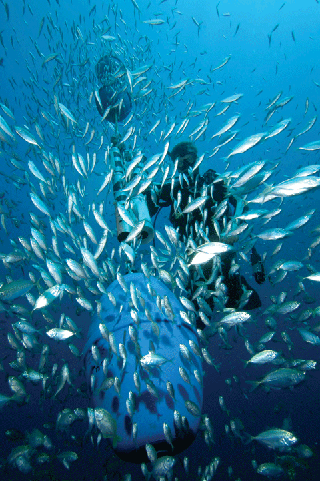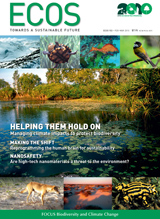
|
Published:
Location key to marine science hub’s value
Marine scientists in the Sydney region have long wanted a local research station, but the cost of harbour front land has been prohibitive. Their luck changed about six years ago, after the Australian Government’s Sydney Harbour Federation Trust opened up ex-military land to be reused for more peaceful purposes. In 2005, the Sydney Institute of Marine Science (SIMS) was born.
Initially a collaborative venture between Macquarie University, University of NSW, University of Sydney and the University of Technology, Sydney, SIMS is located at Chowder Bay, a former Australian Navy site on the Harbour’s North Shore.
Last year, the fledgling institute received a large boost of funding to help turn it into a world-class marine research facility. The bulk of the money – $19.5 million – came from the Government’s Education Investment Fund, with an extra $1.2 million from the NSW State Government and the Ian Potter Foundation. SIMS’ role as one of the five Australian nodes for IMOS (the Government’s Integrated Marine Observing System) saw them receive a further $6 million for the ocean infrastructure required to characterise the surrounding ocean over the next 50 years.
According to SIMS’ Director Professor Steinberg, SIMS is fortuitously placed – it is located precisely where Australia’s largest urbanised estuary intersects with the East Australian Current (EAC), which is an important factor in east coast climate.
‘The geography of SIMS allows us to study the two central environmental issues for oceans, from the point of view of human impacts: climate change-related ocean warming, and urban effects on the ocean ecosystem,’ he says.
Professor Steinberg points out that the Sydney coastal region is a global hotspot for temperature changes.
‘Across eastern Australia, the temperature has increased by a couple of degrees over the past 100 years. And, the EAC – the same warm water current made famous by Nemo – is intruding further south every year. We’re studying the current’s basic oceanography and its interaction with the atmosphere to find out why this happens.’
Ocean-atmosphere interactions play an important role in coastal weather. For example, an atmospheric climate phenomenon known as east coast lows (ECLs) cause major storms.

|
|
Monitoring at Ningaloo Reef, WA: SIMS is the national base for the Australian Acoustic Tracking and Monitoring System (AATAMS). Credit: Rob Harcourt
|
‘The interaction between sea temperatures and land temperatures is an important factor in the severity of ECLs,’ Professor Steinberg says. ‘We want to understand how and why these temperature changes occur, so that we can better predict the onset and behaviour of ECLs and develop better warning systems for these storms.
‘Another focus of our research is looking at what happens to the coast when we get ECLs due to changes in the EAC. The consequences of climate change-related weather patterns can include beach erosion, sand and sediment shifts, and sea level rises – all of which can affect the beachside residents of Sydney.’
SIMS’ second arm of research focuses on the effects of human interaction – particularly coastal development and pollution – with the Harbour, the EAC
and the wider ocean.
‘One of our research areas is ecotoxicology,’ says Professor Steinberg. ‘Traditionally, this type of work has only been done in small laboratory aquaria, out of the complex context of the natural environment.
‘But we can examine the effects of ecotoxins such as heavy metals directly in the field. For example, we’ve already seen interactions between contaminants and population changes of invasive versus native species.’
Professor Steinberg hopes that a few years down the track, SIMS will have given us a much better understanding of ocean-atmosphere dynamics and weather patterns.
‘We’ll be able to predict some of the consequences to the coast and implications for coastal development,’ he says. ‘And, we’ll know more about how climate change and ocean warming impact on biological systems, which will help us preserve our coastal biodiversity.’
More information:
Sydney Institute of Marine Science,
www.sims.org.au




